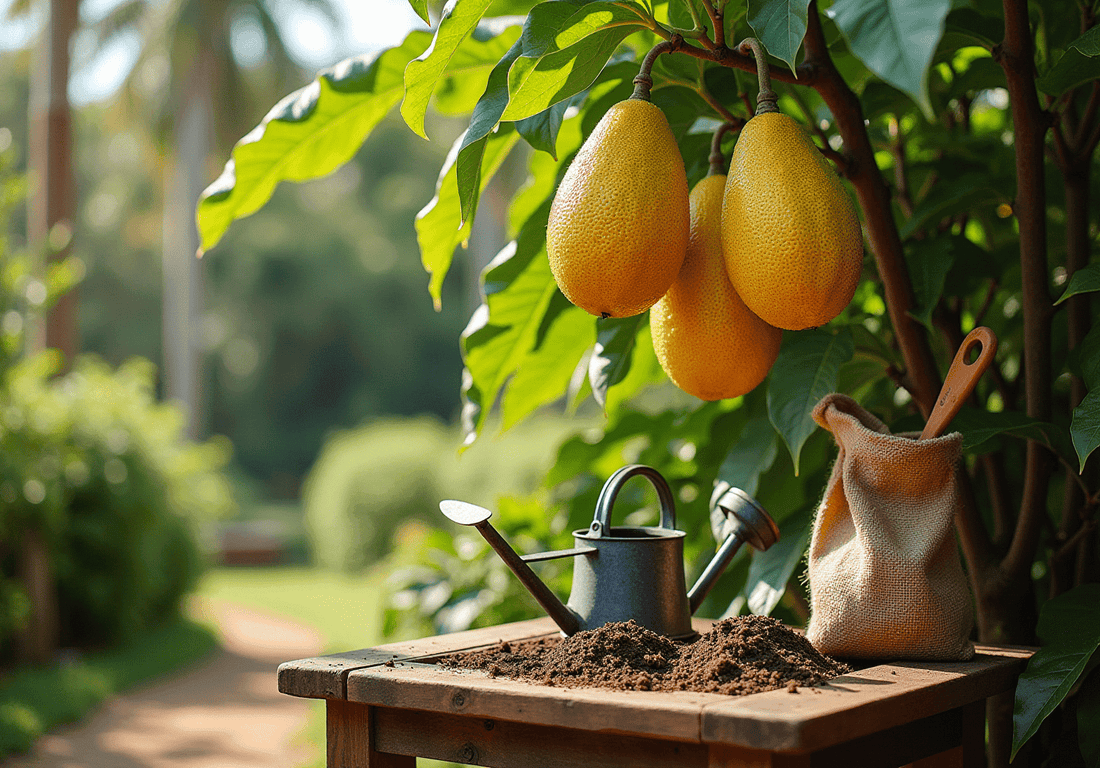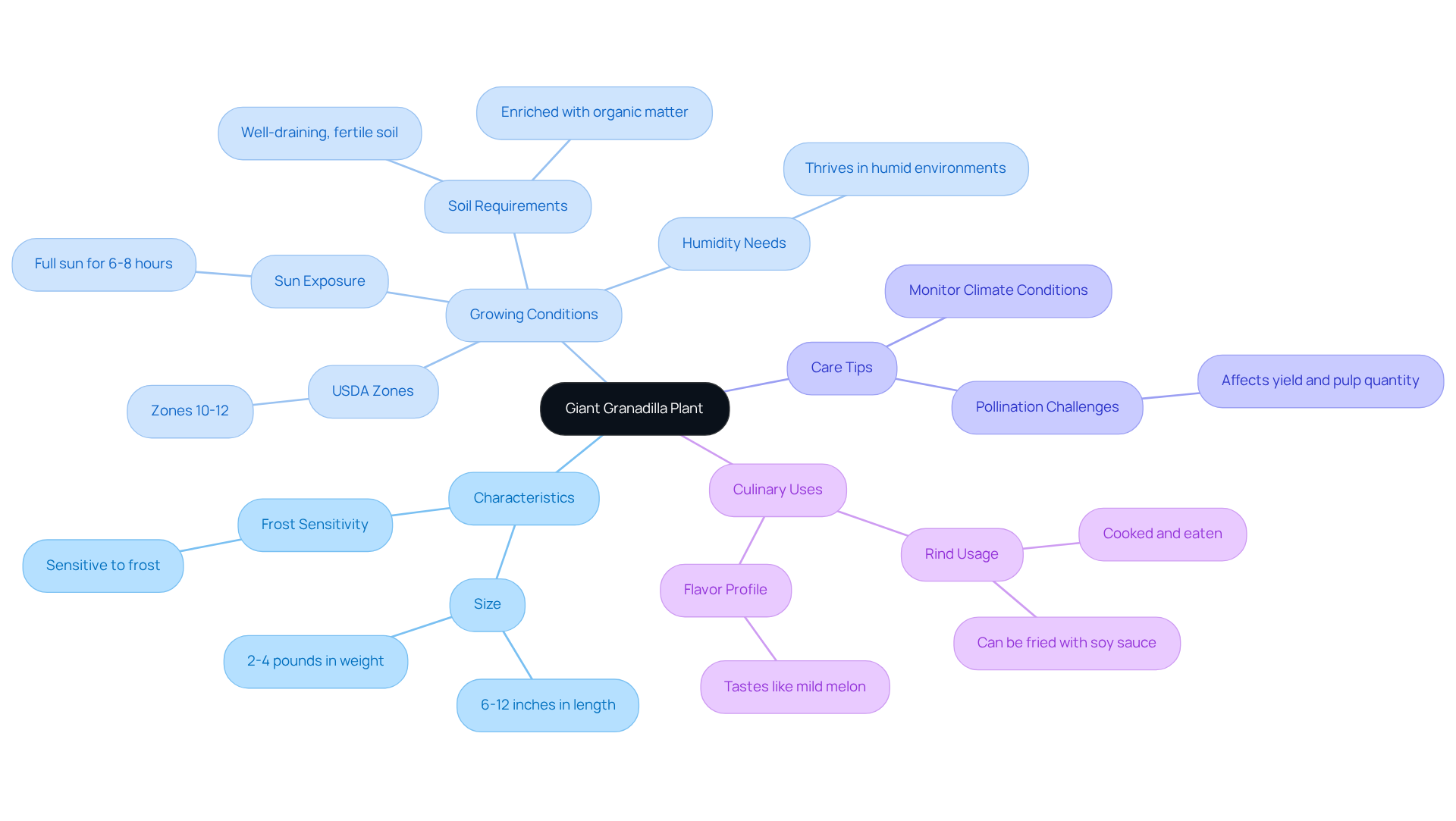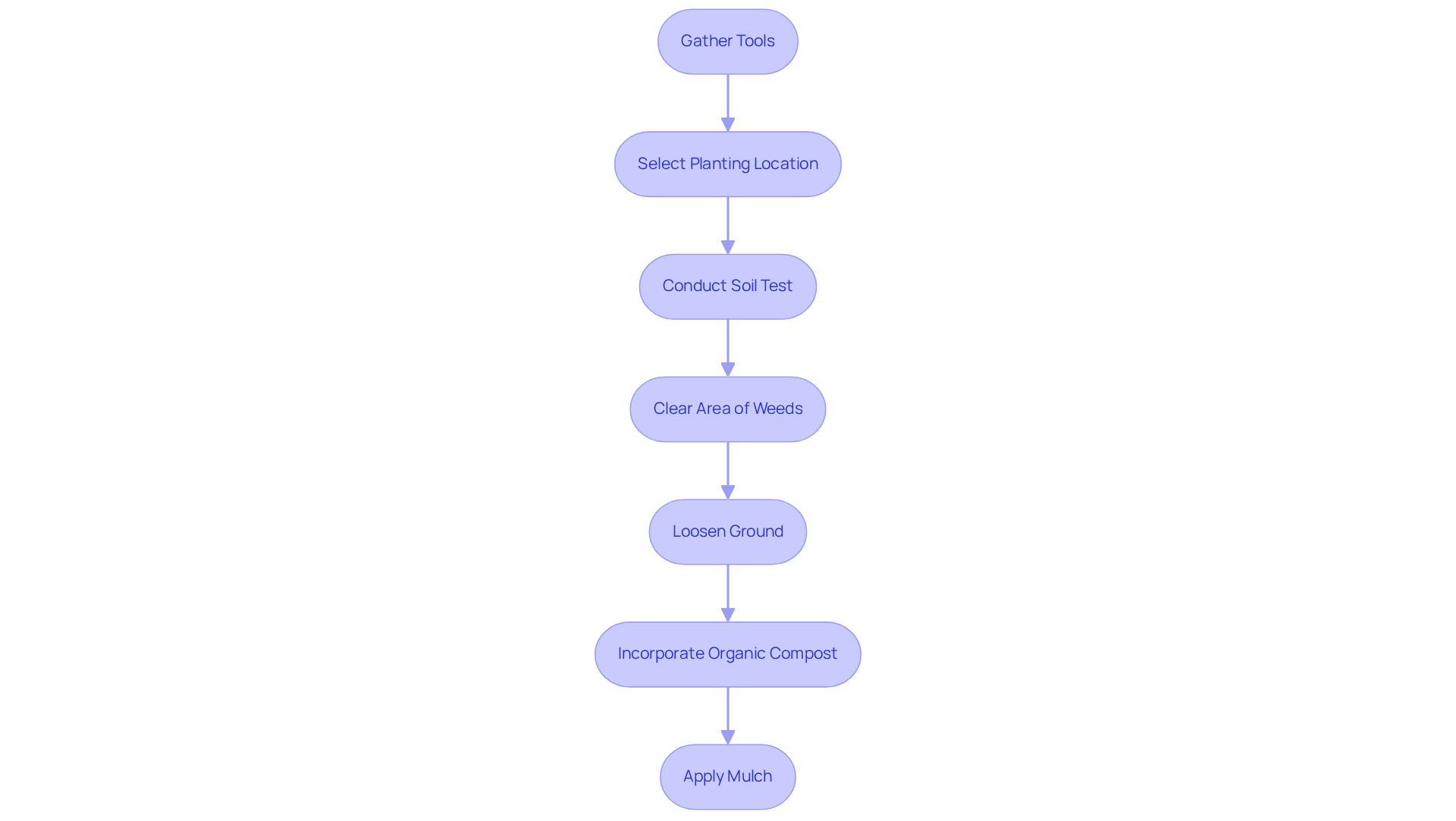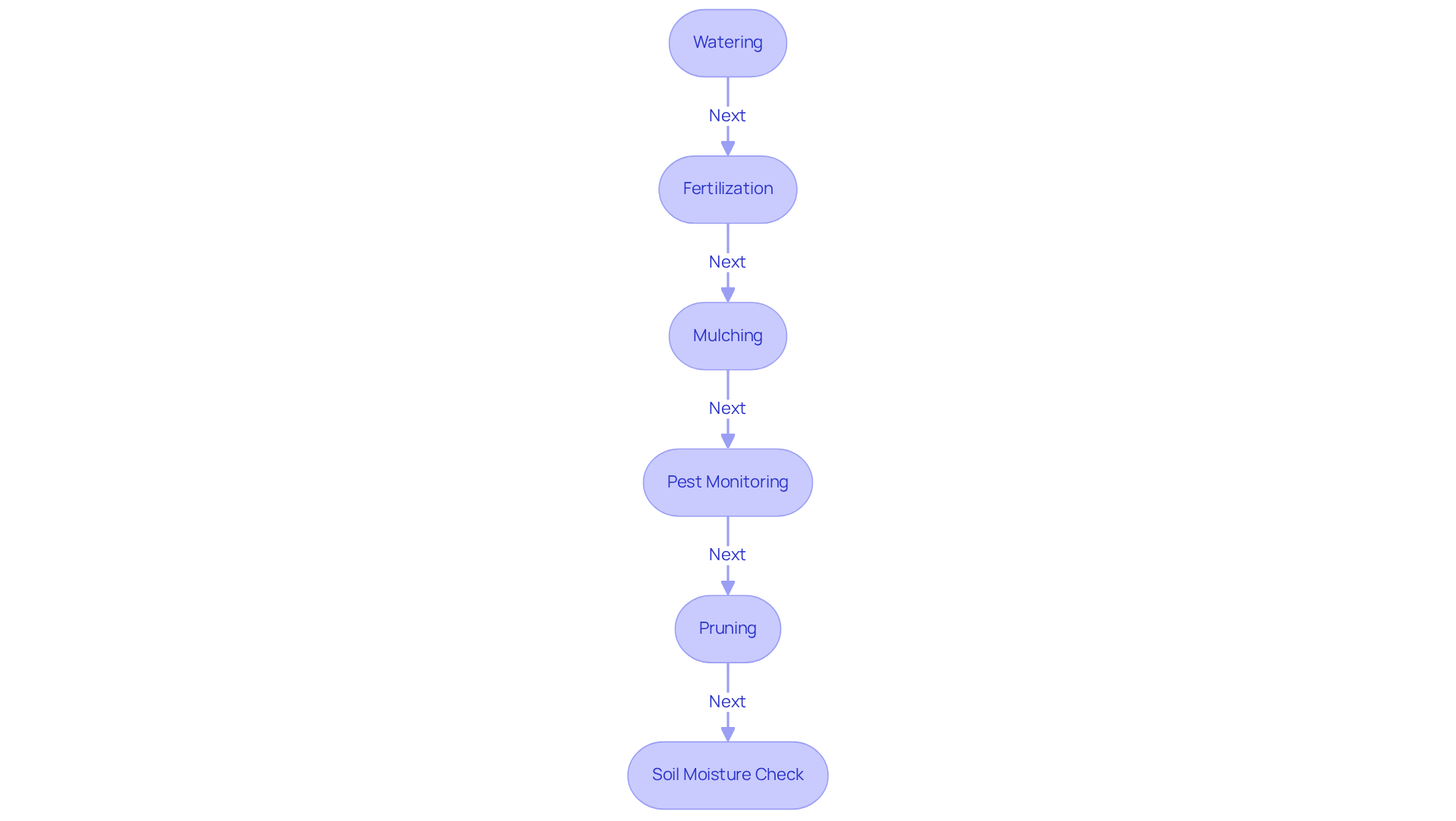
Grow Your Giant Granadilla Plant: Step-by-Step Guide
Share
The giant granadilla plant is a tropical marvel, celebrated for its impressive fruit size, and it offers both beauty and bounty for home gardeners. With the right knowledge and techniques, cultivating this robust vine can lead to a rewarding gardening experience, yielding fruits that can weigh up to four pounds. However, the journey to successful growth is not without its challenges.
What are the key factors that can make or break the cultivation of this extraordinary plant? This guide will delve into the essential steps for growing the giant granadilla, from preparation to harvest, ensuring that gardeners can enjoy the fruits of their labor.
Want to grow a Granadilla Plant in your garden?
Explore Giant Granadilla Plants for sale at Everglades Farm - shipped directly from Florida.
1. Understand the Giant Granadilla Plant
The giant granadilla plant, also known as Passiflora quadrangularis, is a robust tropical vine recognized for producing the largest fruits within the Passiflora genus. Some specimens can reach sizes comparable to a football, measuring between 6 to 12 inches in length and weighing between 2 to 4 pounds. This plant thrives in warm temperatures and ample sunlight are essential for its growth. Optimal conditions include full sun exposure for at least 6-8 hours each day, along with well-draining, fertile soil enriched with organic matter to support vigorous development.
Particularly sensitive to frost, the giant granadilla plant flourishes in humid environments. Therefore, it is crucial to monitor local climate conditions to ensure successful cultivation. Recent studies have shown that maintaining these ideal conditions significantly enhances crop yield and quality, highlighting the importance of proper care in home gardening endeavors. Additionally, potential pollination challenges may affect yield and pulp quantity, which should be considered for optimal cultivation.
Some gardeners have observed that the rind can be cooked and eaten, adding culinary versatility to this impressive fruit. This characteristic not only enhances the fruit's appeal but also offers additional ways to enjoy its unique flavor.

2. Gather Tools and Prepare Your Planting Area
To successfully cultivate your giant granadilla plant, begin by gathering essential tools:
- A trowel
- A watering can or hose
- Organic compost
- Mulch
- Stakes or trellises for support
Selecting a planting location that receives abundant sunlight and has well-draining ground is crucial, as these conditions are vital for the growth of the vegetation. Before preparing the area, consider conducting a test of the ground to assess nutrient levels and pH, ensuring that the soil is healthy and fertile, which is essential for robust growth. Start by clearing the area of any weeds or debris, which can compete for nutrients and water.
Next, loosen the ground to a depth of at least 12 inches to encourage root expansion and aeration while avoiding compaction that can hinder water infiltration. Incorporate organic compost into the ground to enhance fertility and improve drainage, establishing an ideal environment for your vegetation. If you choose to plant in containers, ensure the container is at least 14 inches deep and wide to accommodate the extensive root system of the giant granadilla plant. Additionally, applying a layer of mulch will help retain moisture and regulate soil temperature, further promoting healthy growth and enhancing the plant's resilience against environmental stresses.
Remember, similar principles apply to growing passion fruit and soursop, making this guide an essential resource for your tropical fruit gardening success.

3. Plant the Giant Granadilla Seeds or Seedlings
To successfully plant the [giant granadilla plant seeds](https://etsy.com/listing/1301724141/giant-granadilla-seeds-rare-exotic), start by soaking them in warm water for 24 hours to enhance germination rates. Prepare a planting hole approximately 1/2 to 1 inch deep in well-draining, humus-rich material. Place the seeds in the hole and cover them gently with earth. For seedlings, dig a hole that is twice the size of the root ball. Position the seedling in the hole, ensuring that the top of the root ball is level with the ground surface, and fill in with earth.
When planting multiple seeds or seedlings, maintain a spacing of 24-36 inches (60-90 cm) apart to accommodate their growth. This spacing is crucial as the giant granadilla plant can grow vigorously, reaching lengths of up to 15 meters. Additionally, seedlings can begin producing fruit within 1-2 years, and under optimal conditions, they can take as little as 6-12 months to fruit, making them a rewarding choice for home gardeners.
For optimal results, ensure that the planting area receives sufficient sunlight and is shielded from temperatures below 10°C, as these species thrive in warm, humid conditions. The ideal temperature for seed tray placement is around 19-24°C (68-75°F) to enhance germination. By adhering to these best practices, you can improve the likelihood of successful germination and growth of the giant granadilla plant, bringing a taste of the tropics to your garden. Furthermore, the leaves and pulp of the Granadilla have traditional medicinal uses, enhancing the value of this remarkable plant.
4. Care for Your Giant Granadilla Plant
Caring for the giant granadilla plant requires a consistent approach to watering and fertilization. Water deeply once a week, ensuring the soil remains moist but not waterlogged, as this promotes healthy root development. During dry spells, increase the frequency of watering to maintain optimal moisture levels. Fertilize every 4-6 weeks throughout the growing season with a balanced fertilizer rich in organic matter, such as an 8-3-9 formula, which provides essential nutrients for robust growth and fruit production. Additionally, it is important to include essential minor elements like boron, copper, manganese, and zinc to support overall vegetation health.
Applying a 2-4 inch layer of mulch around the base of the giant granadilla plant not only helps retain moisture but also suppresses weed growth, creating a healthier environment for the giant granadilla plant. Regularly monitor for pests such as aphids and whiteflies; if you notice any, consider using insecticidal soap or introducing beneficial insects like ladybugs to manage the population naturally. Furthermore, check moisture levels beneath the mulch to ensure sufficient hydration, as mulched regions can still dry out.
Pruning is also essential; trim the plant as needed to encourage airflow and remove any dead or diseased growth, which can hinder the plant's overall health. Utilizing can further enhance your watering strategy by providing real-time data on moisture levels. By adhering to these practices, you can guarantee a flourishing giant granadilla plant that produces tasty fruit.

5. Harvest Your Giant Granadilla Fruits
Large Granadilla specimens are typically prepared for gathering 55 to 60 days following anthesis, which corresponds to approximately 6-9 months post-planting. Indicators of ripeness include:
- A glossy, translucent skin that may show a slight yellowish hue at the apex
- A gentle give when squeezed
It is crucial to recognize that the giant granadilla plant produces a non-climacteric item, meaning it does not ripen after being picked; thus, regular checks are essential. To gather, employ pruning shears to from the vine, ensuring minimal damage to the plant. Once collected, store the produce in a cool, dry location, allowing them to remain fresh for several weeks. Ethylene treatment can enhance surface yellow pigmentation, particularly for produce harvested at 50 and 55 days after anthesis. This method of gathering not only preserves the quality of the produce but also improves the overall yield of your tropical garden, particularly the giant granadilla plant. As noted in research, "the optimum harvesting period of this fruit was 55 to 60 days after anthesis (DAA).
Conclusion
Growing a giant granadilla plant can be a rewarding endeavor that brings the vibrant flavors of the tropics to any garden. By understanding the plant's specific needs and following the outlined steps, gardeners can successfully cultivate this remarkable vine, ensuring it thrives in optimal conditions. The journey from seed to fruit involves careful preparation, consistent care, and timely harvesting, all of which contribute to a fruitful yield.
Throughout the article, essential strategies for cultivating the giant granadilla were highlighted, including:
- The importance of selecting the right location
- Preparing the soil
- Maintaining proper watering and fertilization practices
Additionally, insights into pest management and the ideal timing for harvesting were provided, emphasizing the need for vigilance and care to maximize the plant's potential. These considerations are vital for anyone looking to enjoy the unique flavors and culinary versatility of the giant granadilla fruit.
Ultimately, the giant granadilla plant not only offers delicious fruit but also serves as a testament to the joys of home gardening. By applying the techniques discussed, gardeners can enhance their green spaces and enjoy the satisfaction of nurturing a plant that thrives under the right conditions. Embrace the opportunity to cultivate this tropical gem and experience the rewards that come with it—both in terms of flavor and the sheer joy of gardening.
Cultivate Your Tropical Paradise Today!
Start growing your giant granadilla and taste the rewards of home gardening with Everglades Farm.
Frequently Asked Questions
What is the giant granadilla plant?
The giant granadilla plant, also known as Passiflora quadrangularis, is a tropical vine known for producing the largest fruits in the Passiflora genus, which can measure between 6 to 12 inches in length and weigh between 2 to 4 pounds.
What are the ideal growing conditions for the giant granadilla plant?
The giant granadilla plant thrives in USDA Hardiness Zones 10-12, requiring warm temperatures, full sun exposure for at least 6-8 hours daily, and well-draining, fertile soil enriched with organic matter.
How does frost affect the giant granadilla plant?
The giant granadilla plant is particularly sensitive to frost, making it essential to monitor local climate conditions to ensure successful cultivation.
What tools are needed to cultivate the giant granadilla plant?
Essential tools include a trowel, a watering can or hose, organic compost, mulch, and stakes or trellises for support.
How should the planting area be prepared for the giant granadilla plant?
The planting area should be cleared of weeds and debris, the ground loosened to a depth of at least 12 inches, organic compost incorporated for fertility and drainage, and a layer of mulch applied to retain moisture and regulate soil temperature.
Can the rind of the giant granadilla fruit be eaten?
Yes, some gardeners have observed that the rind can be cooked and eaten, adding culinary versatility to the fruit.
What factors can affect the yield and quality of giant granadilla fruit?
Proper care, including maintaining ideal growing conditions and addressing potential pollination challenges, significantly enhances crop yield and quality.

